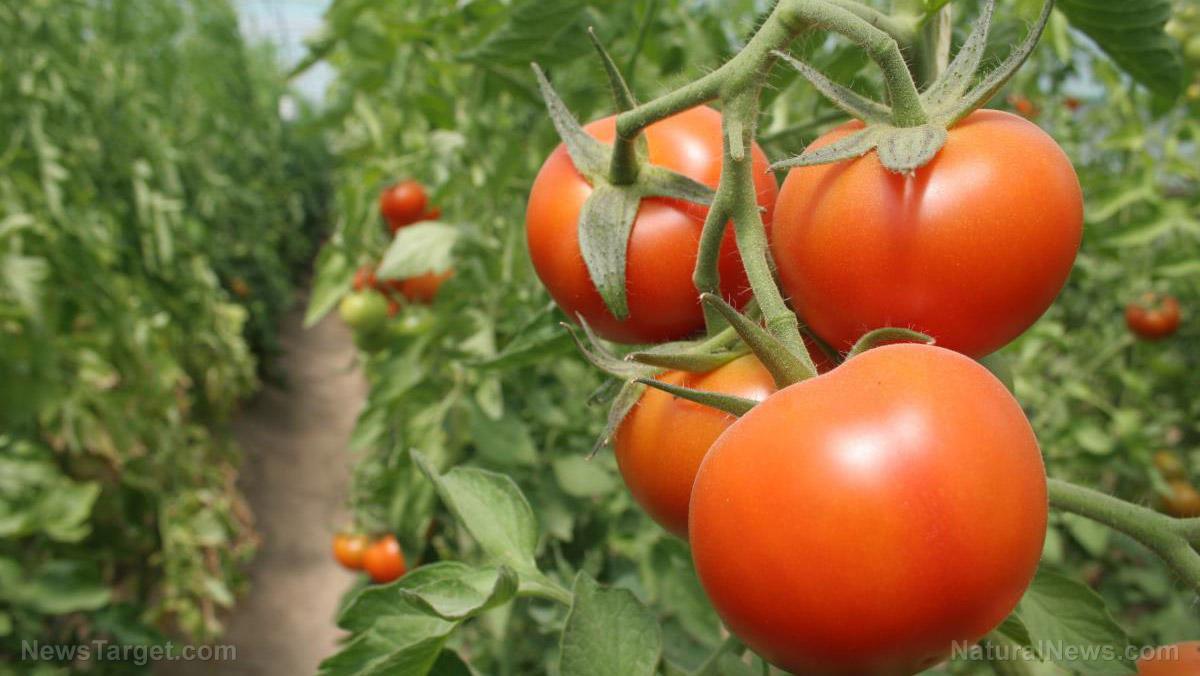
Advertisement
Varying the water used in the cultivation of cherry tomatoes may help increase their nutrient content, according to new research from the University of Seville.
In their study, researchers found that when they reduced the amount of water used to irrigate the cherry tomatoes by more than 50 percent, not only did the quality of the crop remain the same, but the tomatoes’ carotenoid content actually increased.
Dubbed “controlled watering deficit,” the technique developed by the researchers involves reducing irrigation by up to 80 percent during the most resistant phase of cultivation, before increasing it as soon as the stage wherein the tomato plants become most sensitive to stress starts.
“This is not about using half the water for no reason, but rather studying the water status of the plants and, knowing their needs, watering the crop in the right way and at the best time,” Mireia Corell, an agroforestry sciences teacher at the university, said.
According to the researchers, this technique, which was developed over the course of three years, benefits farmers, who will be able to save up on their resources since the crops effectively consume less water and energy. At the same time, it also benefits the consumers, who, in the end, get to buy much more nutritious and sustainable tomatoes.
“Consumers demand healthier food so that they can live longer and better. But it’s not only a matter of increasing life expectancy. It’s also about making sure that we are healthy in our old age,” said Antonio J. Meléndez, a teacher in the Pharmacy Faculty at the University of Seville.
The researchers also noted that this irrigation technique can also be adapted for use with other crops such as olives and almonds. Both of these grow in warm and dry climates that would normally require increased irrigation.
What are carotenoids?
Carotenoids are a class of phytonutrients or plant chemicals responsible for bright red, yellow and orange hues in many fruits and vegetables.
They are usually found in the cells of a wide variety of plants, algae and bacteria and often help in their absorption of light energy for use in photosynthesis. In addition, they also function as antioxidants, which means that they are capable of neutralizing the negative effects of free radicals – single oxygen atoms that can damage cells by reacting with other molecules.
According to experts, there are more than 600 different types of carotenoids, some of which can be converted into vitamin A once ingested and released into the body.
Some of the most common carotenoids include:
- Alpha-carotene
- Beta-carotene
- Beta-cryptoxanthin
- Lutein
- Zeaxanthin
- Lycopene
Of these, lycopene is the most abundant in tomatoes.
A red-colored plant pigment and antioxidant, lycopene has been extensively studied for its health benefits, such as its ability to promote good cardiovascular health, protect the body against certain types of cancers, promote good eyesight and promote optimal cognitive function.
How do you increase your carotenoid consumption?
Lycopene is found in large quantities in the skins of tomatoes. In fact, a general rule of thumb is that the redder a tomato is, the more lycopene it has.
Most commercially-available tomatoes, however, are actually artificially ripened with ethylene gas. This means that they may not be as abundant in health-supporting nutrients as they would appear.
If you want to maximize your intake of lycopene and other carotenoids, or if you just want to maintain a steady supply of fresh tomatoes, one viable option would be to plant your own crops.
Here are some tips for growing your own tomatoes:
- Choose the right variety of tomatoes. Tomato varieties are generally classified into two: determinate and indeterminate. Determinate varieties have a limited life span of about five months and are only good for one harvest season. The indeterminate varieties, on the other hand, can continuously grow and produce tomatoes for several growing seasons. Indeterminate varieties are usually bigger and are generally not ideal for container gardening. If you do not have space for an actual garden, it may be best if you choose determinate varieties, since these are the ones that can grow better in containers.
- Make sure your plants get a lot of sunlight. When growing tomatoes, always plant them in the sunniest area you can find — just make sure that there is some sort of shade, in order to prevent the leaves from burning and hardening. If it’s not possible for you to grow them outdoors, you can always invest in artificial grow lights.
Make sure you have the right containers. When making a bucket garden, make sure to plant your tomato plants in the biggest containers you can find. This is because tomatoes love to spread their roots, which allows them to absorb more nutrients from the soil. - Don’t forget to fertilize. Speaking of nourishment, it’s important to not let their soil get depleted. Compared to other vegetables, tomato plants are notorious for being heavy feeders, which means that they tend to suck out all the nutrients in the soil faster than others. In order to keep it well-fed, you have to add compost or organic fertilizer on a weekly basis. This will help ensure a continuous harvest. You can also add some dissolved epsom salts to the soil in order to help the plants absorb more of the soil’s nutrients.
- Do not overwater your plants. Tomatoes do not like getting their roots wet. This means that you have to make sure your container or plot is well-draining in order to avoid water-logging the soil. Failing to do so will make your tomatoes more prone to infections and root rot. Once you become more adept at watering, try doing the “controlled watering deficit” technique in order to boost your tomatoes’ nutrient levels.
- Plant them deep. When transplanting your tomato plants, plant them deep — i.e. all the way to the top few leaves. This will force the plants to develop roots along their stems.
- Prune your plants regularly. Once your tomatoes have grown substantially, make it a habit to remove the old leaves near the bottom part of the stems. This will force the plant to make more leaves at the top, thus resulting in lusher growth. Pruning will also stimulate the plant to produce more fruits which is never a bad thing.
One of the most nutritious and delicious vegetables known to man, the versatile tomato is filled to overflowing with essential nutrients and potent phytochemicals, all of which are key to achieving optimal health and wellness.
Sources include:
Advertisements







